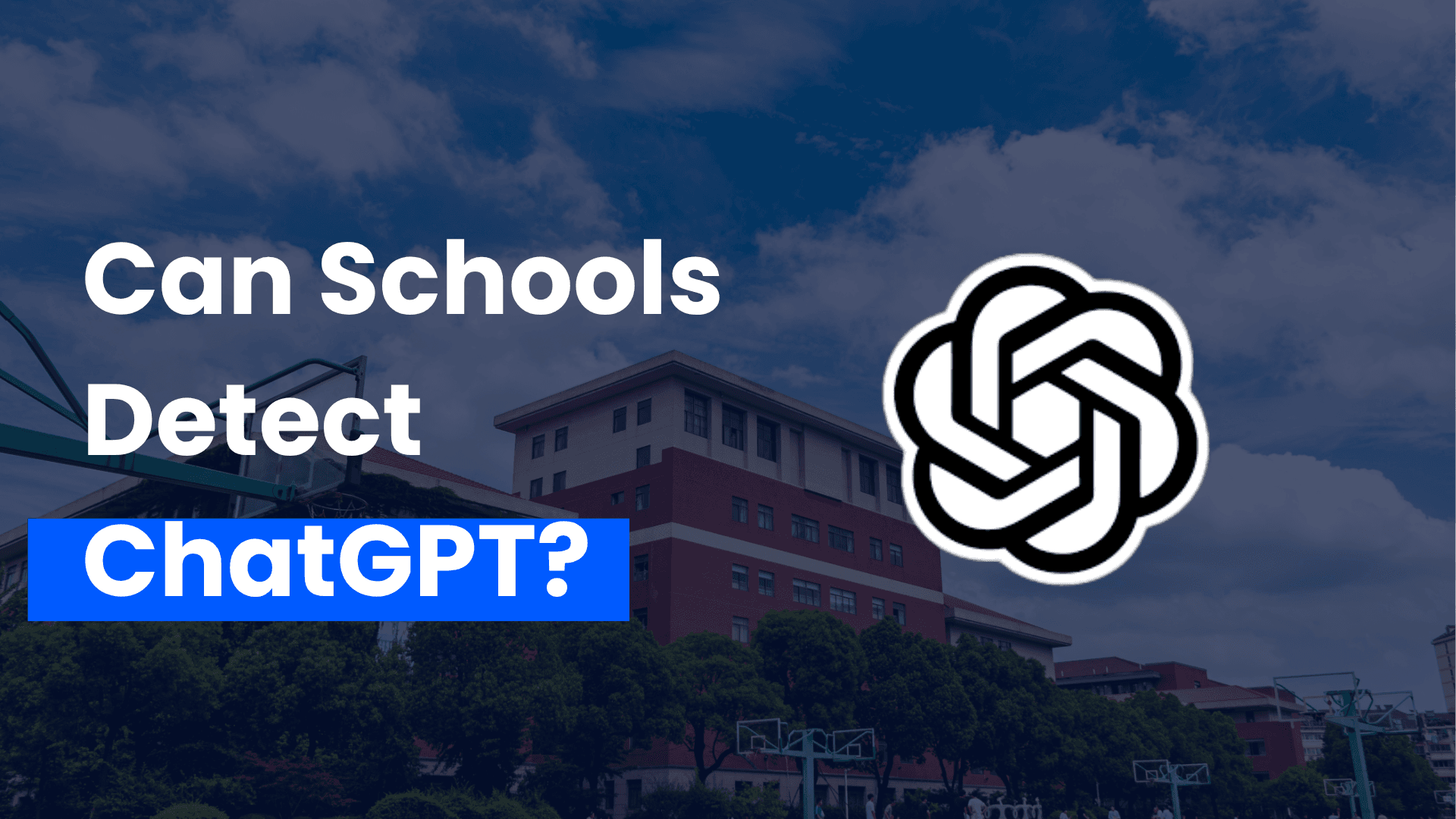The rapid growth of artificial intelligence (AI) has given rise to powerful tools like ChatGPT that can generate text on virtually any topic in seconds. While this can be incredibly useful for students looking for assistance with their studies, it also raises an important question: Can schools detect ChatGPT?
In this blog, we’ll explore how schools are identifying AI-generated content, the technologies they use, and how students can responsibly navigate the use of ChatGPT. At the end, we’ll discuss a solution for those looking to use AI-generated text while avoiding detection: Humanize AI Text.
How Do Schools Detect ChatGPT?
As ChatGPT and similar AI tools have become more popular among students, schools and universities are facing new challenges. Professors are increasingly using AI detection tools to ensure that the work submitted by students is their own. These tools are designed to spot the telltale signs of AI-written content, which is often different from human writing in various ways.
AI Detection Tools Used by Schools
Schools use AI detection tools to determine whether content was generated by AI. These tools work by analyzing text for patterns that are commonly found in AI-generated writing. Some of the most popular tools include:
- Winston AI: Known for its accuracy, Winston AI detects AI-generated text with an accuracy rate of 99.98%. It works by scanning for specific markers that AI writing typically exhibits, such as a lack of deep context or a tendency to use overly formal language.
- Turnitin: A well-known plagiarism detection tool, Turnitin has added features to detect AI-written text. While it’s great at spotting copied content, it’s less effective at detecting AI because AI doesn’t directly copy text—it generates new content.
- Copyleaks: This tool uses AI to detect content written by AI systems. However, it has been criticized for being more easily fooled compared to tools like Winston AI.

Ai Detector Tools Comparison
How ChatGPT is Detected
Unlike traditional plagiarism detection software, AI detection tools look for a different set of characteristics. When ChatGPT generates text, it often produces content that is grammatically correct but lacks a human touch—such as too many generic phrases or an overly polished tone.
For instance, professors can look for:
- Repetitive phrases: AI tools like ChatGPT may use certain phrases too often, which can make the writing sound robotic.
- Lack of depth: AI often fails to include the nuance and critical thinking that human writers bring to their work.
- Generic or formal language: While this might seem like a small detail, AI-generated text often lacks the personal tone or informal language that students typically use in their essays.
Can Professors Tell if Students Are Using ChatGPT?
It’s not just about running the text through an AI detector. Professors often have a keen sense for spotting inconsistencies in writing styles, especially when they’ve worked with the same student over time.
How Professors Spot AI Use
Professors can detect ChatGPT in a few subtle ways:
- Inconsistent Writing Style: A sudden shift in writing style—such as using highly formal or polished language in an assignment that was typically informal—can be a red flag. Professors who know a student’s usual writing style are more likely to spot these changes.
- Lack of Personal Experience: AI-generated text doesn’t often incorporate personal experiences or perspectives, which are often a key part of academic essays and assignments. If a student’s writing suddenly lacks that personal touch, it could be an indication of AI use.
- Overly Perfect Grammar: While ChatGPT produces grammatically correct text, human writing often includes slight imperfections, such as incomplete thoughts or minor errors. When a student’s writing is unusually flawless, professors may begin to suspect AI involvement.
How Can Professors Combat AI Cheating?
To combat the use of AI tools like ChatGPT, professors and educators can take several proactive steps:
- Design Critical Thinking Assignments: Assignments that require deep analysis or personal insights are harder for AI to replicate convincingly. Professors can ask questions that encourage students to think critically and use real-world examples.
- Oral Exams: One of the best ways to assess a student’s understanding of their work is through an oral exam. This forces students to explain their thought process and the research behind their assignments.
- Require Citations: AI-generated text often lacks real citations, as it tends to make up fake sources. By requiring students to provide detailed references and bibliographies, professors can spot inconsistencies in the AI-generated content.
The Limitations of AI Detection
AI detection tools, while useful, are not foolproof. They may flag content that isn’t AI-generated, or they may miss subtle AI usage. For instance, a student might use ChatGPT for part of their essay and then edit it heavily to make it sound more human-like. In these cases, AI detection tools might not be able to accurately determine whether the content is AI-generated.
The Ethics of AI Use in Academia
AI tools like ChatGPT can be incredibly helpful for students, especially when they need a starting point for their assignments. However, using these tools without understanding the ethical implications can lead to academic dishonesty.
Universities should focus on educating students about the responsible use of AI in academic work. Teaching students how to properly incorporate AI tools into their work without plagiarizing or passing off AI-generated text as their own is key to maintaining academic integrity.
Can AI Tools Like ChatGPT Be Used Responsibly?
While ChatGPT can be detected easily by professors using AI detection tools, students can still use AI tools in a responsible way. The key is to use AI as a supplemental tool rather than a substitute for original thinking.
For instance, students can use ChatGPT to:
- Generate Ideas: AI can help brainstorm ideas or provide a framework for an essay.
- Improve Writing: ChatGPT can suggest ways to rephrase sentences or improve grammar.
- Understand Complex Concepts: Students can ask ChatGPT to explain difficult concepts in simpler terms, making it easier to understand.
By using AI responsibly, students can enhance their learning experience while maintaining academic integrity.
How to Avoid Detection: Humanize AI Text
While AI detection tools are becoming more advanced, there is a way to avoid detection and still use AI tools like ChatGPT: Humanize AI Text.
Humanize AI Text is a tool designed to help students and professionals use AI-generated content without raising suspicions. The tool works by adjusting the tone, style, and flow of AI-generated text, making it sound more natural and human-like.
This can be particularly useful for students who want to use ChatGPT as a research tool or to generate content but need to ensure that the final product doesn’t trigger AI detectors.
How Does Humanize AI Text Work?
Humanize AI Text works by analyzing the structure and wording of AI-generated content. It then makes adjustments that improve the text’s flow and make it sound more like it was written by a human. This includes:
- Adjusting tone and style: The tool can change the tone to fit the user’s unique voice, whether that’s formal, casual, or academic.

Humanize AI Texts's Dashboard showing Adjusting tone and style
- Improving structure: Humanize AI Text can modify sentence structures to ensure the content flows more naturally and is less robotic.

Humanize AI Text's Dashboard Showing Improving Structure
- Adding Context: The tool adds relevant context or examples to make your writing more engaging and personal, ensuring it connects better with your audience.

Humanize AI Text's Dashboard Showing Adding Context
Using Humanize AI Text can help students improve their use of AI tools while ensuring that their work remains undetectable by AI detection systems.
Frequently Asked Questions
Q1: How can I tell if my professor suspects that I used ChatGPT?
Professors may notice inconsistencies in your writing style or a lack of personal touch. They may also use AI detection tools to check for AI-generated content. It’s important to maintain consistency in your writing style and to integrate personal insights into your work.
Q2: Can AI-generated text be completely undetectable?
No, AI-generated text can still be detected by advanced AI detectors, especially if it’s not edited to sound more human-like. Tools like Humanize AI Text can help make AI-generated content sound more natural and less robotic, but it’s always best to use AI as a supplement rather than a replacement for original thought.
Q3: What is the best way to use ChatGPT for my assignments?
The best way to use ChatGPT is as a research tool or for idea generation. You can use it to help you understand complex topics, generate outlines, or suggest ways to improve your writing. Always ensure that your final work is original and that you cite your sources properly.
Q4: Are AI detectors 100% accurate?
No, AI detectors are not foolproof. They can sometimes flag content that isn’t AI-generated or miss AI-generated content that’s been heavily edited. It’s important to use these tools as one part of the process of ensuring academic integrity.
Q5: How can I avoid AI detection in my work?
To avoid detection, ensure that any AI-generated text is thoroughly edited and personalized. Tools like Humanize AI Text can help make the content sound more natural and less robotic. However, always use AI as a tool to support your learning, not to replace your own effort.


